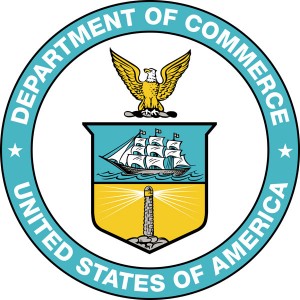
 As was evident on a panel at the Politics Online Conference in Washington DC earlier this week, one of the major Internet focused changes the Obama administration has brought to the capital is not only a rethinking of open data and a more dynamic Whitehouse.gov, but also a new job position: new media director.
As was evident on a panel at the Politics Online Conference in Washington DC earlier this week, one of the major Internet focused changes the Obama administration has brought to the capital is not only a rethinking of open data and a more dynamic Whitehouse.gov, but also a new job position: new media director.
Sitting in on the panel that included four new media directors representing the Justice, Treasury and Commerce departments as well as the FCC, it was interesting to see how each of them have basically been inserted into organizations that have websites that in the words of the Justice Department’s new media director Tracy Russo, “I couldn’t stand to look at it anymore.”
While the other three organizations currently have new media teams of one, the FCC’s Gray Brooks was the envy of the panel with a current team of five with plans to expand to eight by the end of the year. Brooks summed it up nicely when he said the FCC needs to greatly improve their web presence for no other reason than the commission…”owes it to America for how we’ve been,” i.e. to make up for trying to regulate the Internet in the US over the last decade.
So what does a new media director at a Cabinet department do? From what was said on the panel, the vast majority of their work right now consists of overhauling their vastly unwieldy websites. Some of these sites have over 175,000 HTML pages – not dynamically generated, mind you, but actual (probably hand-coded) HTML static pages with little to no site structure. Thankfully, it seems as if this is about to change – the FCC’s Brooks confirmed that the new site they are working on will be dynamic and database driven.
The new media directors at these organizations are also focused on creating more interesting content – especially video – as well as simplifying the language that is used on their websites. Take the Justice Department: most of their staff is lawyers. Do we really need to elaborate?
From a private-public sector relationship point of view, a few people (read: vendors) in the audience took the opportunity to ask what these key people in the new administration needed from the private sector. Although the answers were a bit vague, they seemed to say that what they had was a large amount of technical resources at their disposal, but that when it came to strategic and real web-savvy communications skills, that they were more or less standing on their own, which could mean opportunities for digital PR firms to support them.
Also, moving forward, it would be logical for these departments to work closely with large social networks to better engage the American people, as, to this point, their websites are still largely broadcast and informational tools. Regardless, just seeing a panel full of people with this title at the Federal level is certainly a further sign that the administration is taking strong steps to pull the federal government’s web presence into the 21st century.
Get the TNW newsletter
Get the most important tech news in your inbox each week.





